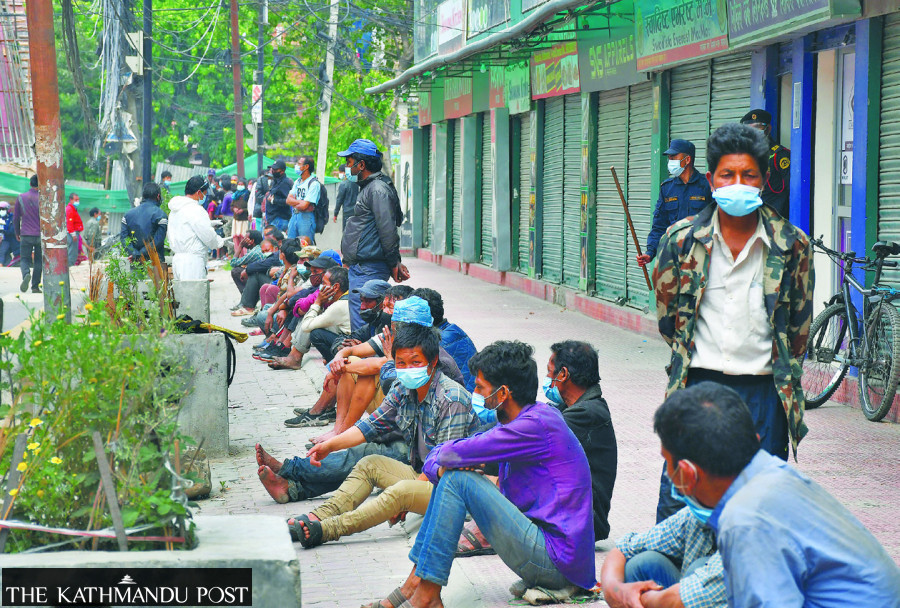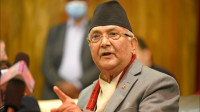National
Cash scheme for pandemic-hit poor receives poor response in Kathmandu
Officials say strict criteria for grant eligibility might be responsible.
Prithvi Man Shrestha
The government in November allocated a quota of 16,270 households for the Kathmandu Metropolitan City to distribute a one-time cash grant of Rs10,000 to the poor families affected by the Covid-19 pandemic.
The quota was allocated as part of a scheme announced through a replacement bill on budget by the current government on September 10. As per its initial plan, the government planned to provide a one time cash grant of Rs10,000 for eligible 500,000 households from across the country before the Dashain festival, but there have been delays including in passing the bill and introducing the working procedures for distribution. The scheme is supposed to be implemented by local governments.
In a surprise result, the Kathmandu Metropolitan City has received a negligible number of applications. “We have so far received recommendations for just 150 households from the ward offices,” said Bharat Oli, employment coordinator for the Prime Minister Employment Programme at the Kathmandu Metropolitan city.
But the Metropolitan City received complaints against three applicants, so the number of households has further come down to 147, according to Oli.
Once the executive of the local unit concerned makes a decision on distributing the cash to the beneficiaries, the distribution process begins, according to the working procedures regarding the scheme issued by the Finance Ministry.
Besides the delay in distributing the grant, the poor response to the scheme from potential beneficiaries indicates that the scheme was introduced without analysing the situation on the ground. There are allegations that the beneficiary quota for each local unit was fixed arbitrarily.
As per the working procedures, workers from the unorganised sector who lost their jobs to the pandemic and haven’t got new jobs, and extremely poor street vendors are eligible for the government succour.
Daily wage workers, farm labourers, rickshaw pullers, public transport workers, and the families that lost their sole breadwinners to the pandemic are also eligible.
But there are certain conditions the beneficiaries need to fulfil. Those receiving the government incentive must be willing to work voluntarily in the future under the Prime Minister Self Employment Programme. And households with even one of their members employed at home or abroad or any member receiving social security allowance from the government, are ineligible for the cash grant.
“Strict eligibility criteria set for the grant could be one reason behind such a poor response,” said Oli.
Budhanilakantha Municipality shares similar experience as Kathmandu. The federal government has allocated a quota of 1,432 households for this municipality. “But we have received recommendations for just 110 households from the wards,” said Kedar Kumar Khadka, administrative officer of the municipality. “Now we are in the process of forwarding the recommendations to the municipal executive, who will make a final decision on the beneficiaries.”
Khadka also believes strict criteria might have discouraged many poor from applying for the grant. “Many people lost their jobs during past lockdowns, but they might have found one or another job after the lockdowns were lifted. Although they suffered during lockdowns they are still ineligible for the government grant because they are already employed,” said Khadka. “No family can survive in Kathmandu without steady earnings.”
Mukhiyapatti Musaharniya Rural Municipality in Dhanusha has received recommendations for just 500 households although the quota allotted to the municipality is for 720 households. “It means all of them are likely to receive the cash grant,” Satya Narayan Sah, chief administrative officer at the municipality, told the Post last week. “It may take some time for cash distribution to begin.”
Poor response to the scheme in many local units, particularly those in Kathmandu Valley, has raised questions about how the quota was fixed for each local unit.
According to the working procedures, the quota was determined based on potential beneficiaries and households at the local level, human development index and socio-economic disparity.
When the pandemic hit the country in 2020, Kathmandu, Nepal’s largest city, became the hotspot of coronavirus infections. Daily wage earners were badly affected when the city went into lockdowns to control the pandemic.
Since Kathmandu is the biggest city and among the most affected by the pandemic, the government allocated a bigger quota for grant distribution, according to officials.
But a Finance Ministry official questioned if the local governments made necessary efforts to identify their poor. “On the streets, we see many people in very poor conditions,” said the ministry official, on condition of anonymity. “Many such people are still uninformed about the scheme because they do not have access to government communication.”
A senior Finance Ministry official, meanwhile, defended the strict provisions for grant eligibility.
Baburam Subedi, joint secretary at the finance ministry said that strict provisions were made to channelize the support to those in urgent need of cash for survival. “We are not in favour of distributing the grant in any way possible,” he said.
Officials at the Finance Ministry said that the federal government has already deposited the money in the accounts of the local governments as per the quota allocated to them. “The unspent amount will automatically freeze,” said Subedi.
The government had planned to distribute the cash before the Dashain festival. But it delayed introducing the working procedure as it was unveiled only in early November. “Now around one third of local governments are in the process of distributing the cash while a few have already started distribution,” said Subedi.




 5.4°C Kathmandu
5.4°C Kathmandu










%20(1).jpg&w=300&height=200)



